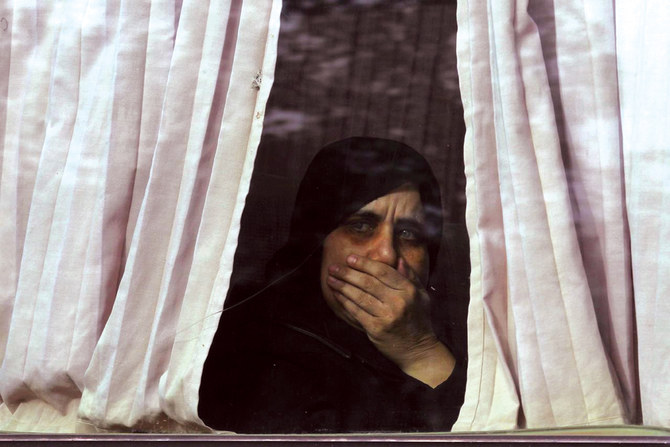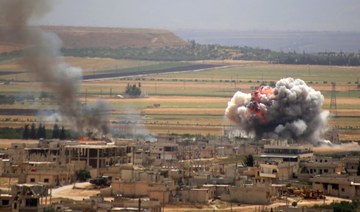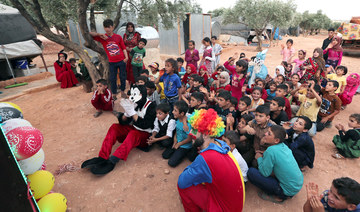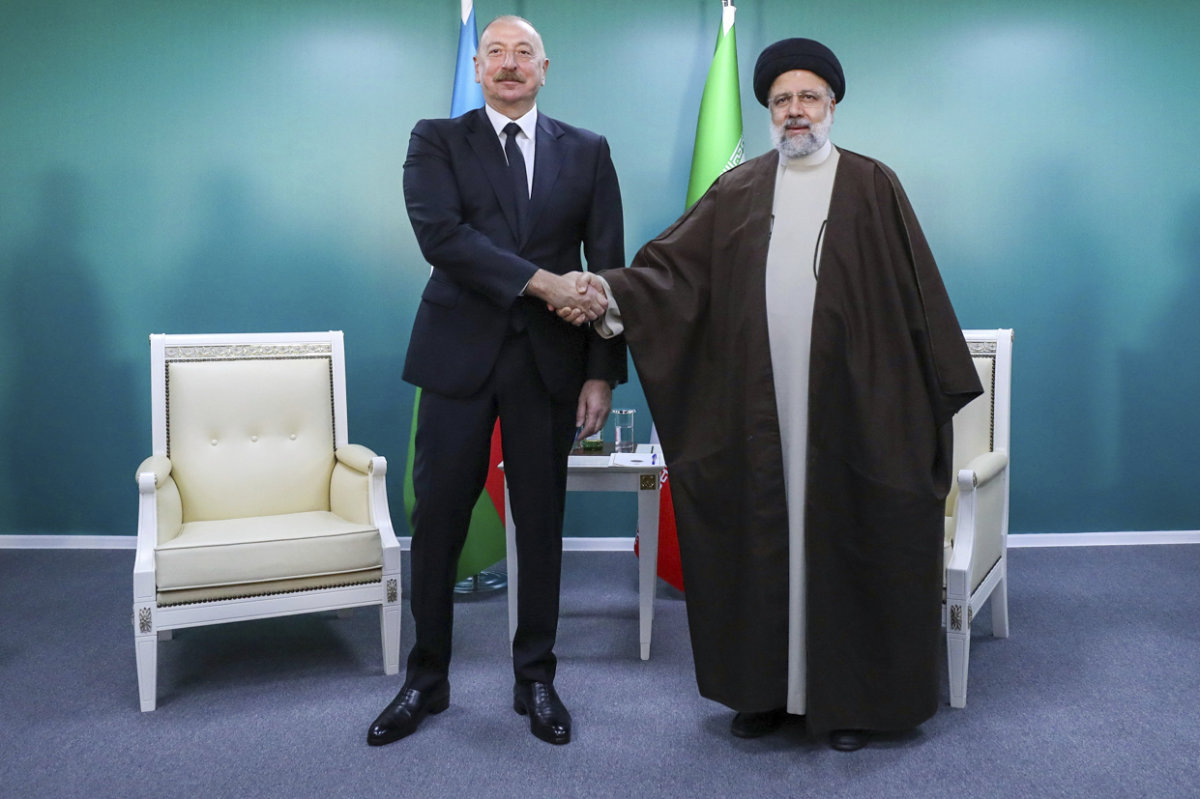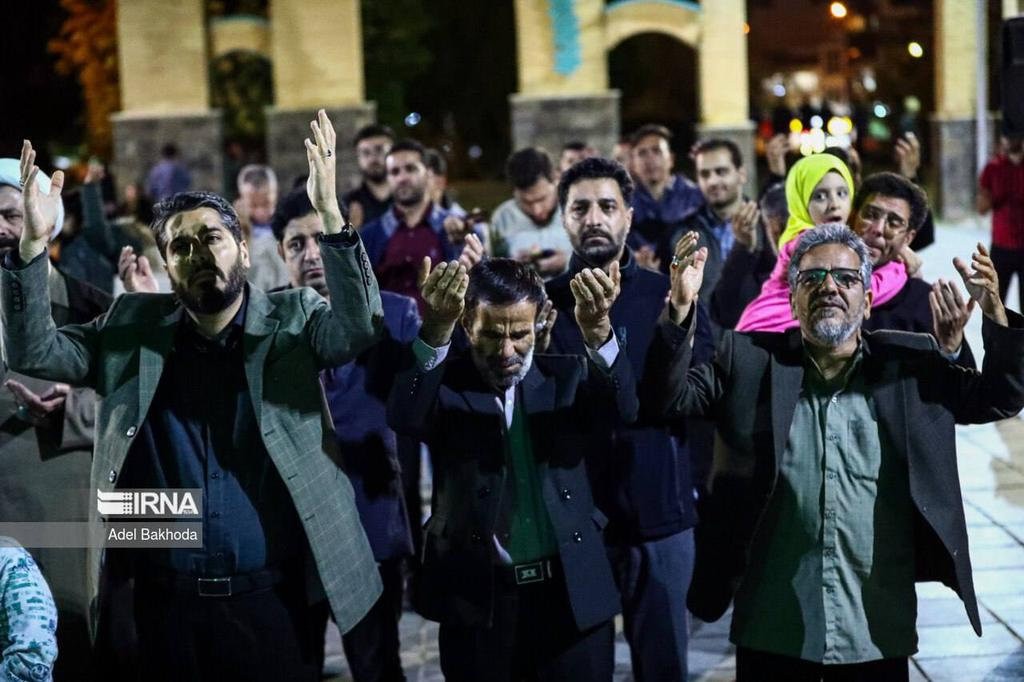DUBAI: It has been 2,168 days since Wafa Moustafa’s father was snatched from his home in Damascus by suspected regime henchmen.
Despite a desperate hunt for answers, 57-year-old Ali Moustafa’s whereabouts remain unknown.
Moustafa is one of the estimated 100,000 Syrian citizens missing since the start of the uprising against the regime of Bashar Al-Assad in 2011.
Seized off the streets or hauled from their homes, most have disappeared into a maze of secret prisons inside the country.
These Syrians — many of them ordinary people denied a chance to prove their innocence — are victims of enforced disappearance, the act of snatching someone away from their families against their will.
Moustafa’s daughter Wafa, then a student, fled from the Syrian capital with her mother 10 days after her father went missing. “All I know is that he was arrested on July 2, 2013, in our family home in Damascus, ” she told Arab News.
“We have not been told why he was arrested or where he is today.
“All we know is what our neighbors told my mother — that government forces raided our house, wrecked the furniture, tore up my father’s clothes and documents and arrested him. Since then, we have had no information.”

Ali Moustafa with his family in happier times before fighting broke out in Syria. He has been missing since being taken from his home in July, 2013. (Supplied photo)
International human rights law lists disappearances at the hands of the state as “enforced” or “forced disappearances.” The Rome Statute establishing the International Criminal Court defines the practice as a crime against humanity.
The state refuses to acknowledge the fate of these individuals, who are either held in overcrowded prisons or killed. Meanwhile, their loved ones remain desperate for information, but are often too fearful to approach the regime.
Anwar Al-Bunni, head of the Syrian Center for Legal Studies and Research, said enforced disappearance is the “strongest weapon” in the hands of the Syrian regime.
“So far there are more than 100,000 detainees forcibly disappeared by the regime documented by name,” he told Arab News.
“The real figures suggest there are more than 150,000 detainees disappeared by the state, but we have indications that half have been killed in detention centers.”
Hannah Grigg, a program officer at Syria Justice and Accountability Center, said that while Syrians have been victims of abductions by different sides since 2011, the regime is responsible for most enforced disappearances.
Aside from the psychological toll, forced disappearances have a knock-on effect on entire families.
“Having a missing loved one is emotionally devastating,” she said. “But it can also be a serious financial challenge.”
IN NUMBERS
• 95,056 - Syrians missing since 2011
• 4,837 - Female victims of forced disappearance
• 1,546 - Child victims of forced disappearance
• 81,652 - Disappearances blamed on Syrian regime
• 8,349 - Disappearances blamed on Daesh
• 1,645 - Disappearances blamed on Hayat Tahrir Al-Sham
• 1,887 - Disappearances blamed on ‘armed opposition’ groups
• 1,523 - Disappearances blamed on Kurdish-led ‘self-management forces’
(Source: Syrian Network for Human Rights, 2018)
In Syria, most of the disappeared are men, many of whom are the family’s sole breadwinner, Grigg said. “Family members are not able to access their loved one’s financial assets, even when the person has been absent for many years.
“While some may be able to request their loved one’s status to be updated to “deceased,” or apply for a divorce, such decisions are difficult and not always socially acceptable,” she said.
During Argentina’s “Dirty War” between 1974 and 1983, when about 30,000 people disappeared, a new legal status, “absence due to enforced disappearance,” was established.
“A similar status in Syria would allow families to access the resources they need while still seeking out the truth about their loved ones,” Grigg said.
A report by the Syrian Network for Human Rights in 2018 said 95,056 people, including 1,546 children and 4,837 women, were victims of forced disappearance between March 2011 and August 2018. During the same period, 13,608 detainees died of torture, the report said.
In July last year, the Syrian government confirmed the deaths of at least 161 people whose whereabouts had been unknown since 2011.
“Seemingly in response to pressure on the issue, last summer the government began to update the civil registry records of many former detainees, recording them as dead of natural causes,” Grigg said.
“Such action is not an acceptable way to close the issue. Families have a right to know what happened to their loved ones.”
Grigg has urged the international community to intervene.
“The UN Special Envoy for Syria needs to prioritize the issue of missing persons in negotiations,” she said. “The release of political detainees, as well as access by international monitors to all detention facilities, must be included in any potential agreement.”
Many organizations have worked to document disappearances in Syria, but it is difficult to provide an accurate number of those missing, Grigg said. “Issuing incorrect numbers or lists of names of those suspected of being detained could put people at risk, either by leaving out detained, at-risk victims or by undercutting the validity of the work through inflated numbers.”
Families for Freedom, a charity supporting relatives of the disappeared in Syria, said arriving at an accurate figure is almost impossible since many families, fearful of repercussions, have failed to register the names of their loved ones with human rights groups.
However, Wafa Moustafa, who is also a member of Families for Freedom, refuses to stay silent about her family’s situation.
“We have tried everything to get information. We have spent money on lawyers,” she told Arab News. “We have paid money to people who have connections with the regime. But these are merchants of war.”
Wafa recalls the family’s horror when her mother returned to their home in Damascus for the first time since leaving the city to find her husband still missing.
Acting on advice, they began to make plans to leave the country.
“In Syria, when the regime arrests a father or a husband, the next thing they do is arrest the wife or the children to pressure the detainee into making confessions.”
When they left for Turkey in 2013, Wafa and her family hoped that Ali Moustafa would be released and they would be able to return to Damascus within days.
Six years later, based in Berlin, she refuses to give up hope.
“Our main goal is to find our loved ones and all detainees in Syria,” she said. “We will not give up until we have the answers.”



